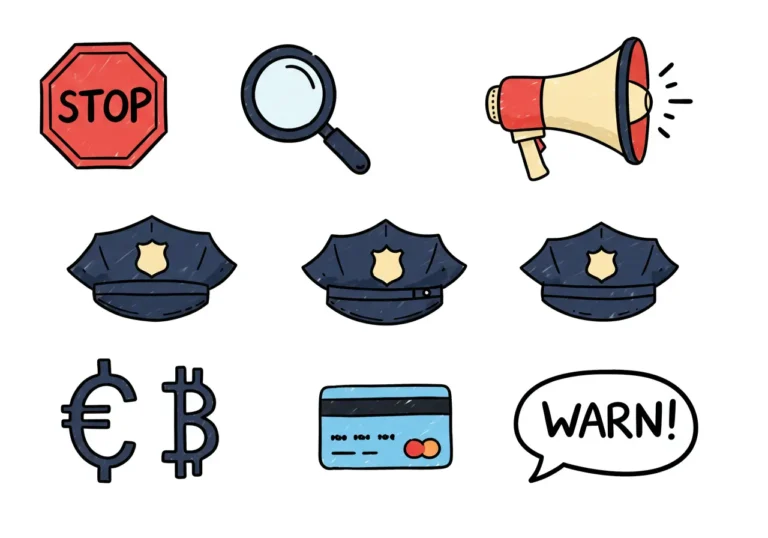Synthetic Assets Explained: How to Gain Exposure Without Owning the Underlying Crypto
Synthetic Assets let you gain exposure to an asset’s price or performance without owning that underlying asset. That means you can follow Bitcoin’s moves, or track a stock, or even mimic a basket of commodities — all without holding the real items. In the crypto world, this opens calm doors for people who want the rewards, but not the custody headaches.
What are Synthetic Assets?

Synthetic Assets are financial products that copy the value of another asset. They can be made in different ways. On blockchains, they often use smart contracts, collateral, or oracles (price feeds) to track a target asset.
Imagine a mirror that always shows the same view as the original painting. A synthetic asset is that mirror. It does not contain the original paint. But its price moves the same way.
Common examples include:
- Tokens that mirror Bitcoin, like wrapped BTC (but note — wrapped BTC is different in mechanics than some synthetics).
- Derivatives that track a stock or commodity.
- Synthetic stablecoins that aim to keep a steady value using other assets as backup.
How do synthetic assets work in simple terms?
At the core, there are three main parts:
- Reference price — Where does the synthetic get the asset price? Oracles deliver this.
- Backing or collateral — Something must secure the synthetic. It could be other tokens that you lock up.
- Smart contract or custodian — This mechanism issues and burns synthetic tokens and enforces rules.
A typical flow:
- You lock collateral into a smart contract.
- The contract mints a synthetic token that tracks the target asset.
- If the target asset rises, the synthetic token rises. If the asset falls, the token falls.
- To exit, you trade the synthetic back to the contract and get collateral adjusted for gains or losses.
Why use synthetic assets? The benefits

People choose synthetics for several good reasons.
1. No custody stress
Owning real crypto means managing private keys and safe storage. Synthetics avoid that. You hold a token that behaves like the asset without the need to secure a seed phrase.
2. Access to assets that are hard to reach
Some tokens or markets are hard to trade directly. Synthetics open doors. You can follow foreign stocks or rare commodities with a token built on a blockchain.
3. Capital efficiency and composability
In DeFi, synthetics can be used as collateral, or combined with lending, liquidity pools, or yield strategies. They can work together with other tools to unlock new yields.
4. Faster and cheaper settlement
On-chain synthetics can settle quickly and without intermediaries. This can make exposure smoother for global users.
5. Regulatory and tax flexibility (sometimes)
In some jurisdictions, synthetics are treated differently than owning the real asset. This can be an advantage for certain investors. But rules vary, so be careful.
Common ways to create synthetic assets
Let’s break down a few common methods in plain language.
Collateralized synthetic tokens
You lock up a mix of assets as collateral. The protocol mints a token that tracks the target. If the value of collateral drops too much, the position may be liquidated. This is common in DeFi platforms.
Algorithmic synthetics
Some projects use algorithms and rules to keep the synthetic token on track. These might use rebalance mechanisms or token burns to match the target asset.
Derivatives and perpetual swaps
These are contracts that track an asset’s price. They don’t require the actual asset. Exchanges and DeFi platforms offer perpetual contracts that mirror price moves.
Wrapped assets
Wrapping is a simpler idea. Someone holds the actual asset and issues a token representing it on another chain. Wrapped tokens are a kind of synthetic, but they often rely on custodians or bridges.
Real-life example: synthetic Bitcoin
Imagine you want exposure to Bitcoin’s price, but you don’t want to hold BTC. A synthetic BTC token can be minted on a DeFi protocol. You lock USD-stablecoins as collateral. The protocol mints synthetic BTC.
If Bitcoin goes up 10%, the synthetic BTC token also goes up roughly 10%. When you sell the synthetic back, you receive the changed value in your collateral after fees. You never held BTC. You gained the price movement.
This works similarly for stocks, gold, or baskets of assets.
Risks to understand
Synthetic assets can be powerful. They also carry real risks. None of these should be ignored.
Smart contract risk
Protocols run on code. If the code has a bug, funds can be lost. Always check audits and the project’s history.
Oracle risk
If a price feed is wrong or manipulated, the synthetic’s value can be wrong. Attackers have targeted oracles before.
Collateral and liquidation risk
If the collateral backing the synthetic loses value, forced liquidation can wipe out positions. You must understand collateral requirements.
Counterparty and custody risk
Wrapped assets can fail if the custodian loses funds. Centralized exchanges offering synthetic exposure can also face solvency issues.
Regulatory risk
Some jurisdictions treat synthetic exposure like derivatives. Rules can change, and that can affect usability and tax treatment.
Liquidity risk
If no one is trading the synthetic, you may struggle to exit without slippage or loss.
Complexity risk
Many synthetics mix layers — derivatives on DeFi, multiple tokens, or cross-chain bridges. More layers mean more places things can fail.
Practical ways people use synthetic assets
Synthetic assets are used in many smart ways. Here are a few examples that show their real utility.
Hedging
A trader worried about short-term price drops might use a synthetic short position. This reduces risk without selling holdings.
Accessing regulated markets
In places where direct access to certain securities is limited, synthetics can let users track those securities on-chain.
Leveraged positions
Some platforms let you gain more exposure than your capital alone would allow. This can amplify returns and losses.
Composability in DeFi
Synths can be used in yield farming, as collateral for loans, or to deposit into liquidity pools. They fit into the modular world of decentralized finance.
Diversification
A user can hold a basket of synthetics to spread risk across many assets while staying entirely on-chain.
How to pick a safe synthetic protocol (practical checklist)
If you’re curious about trying synthetics, here are simple steps to vet a project.
- Read the docs: Good projects explain how collateral, oracles, and liquidation work.
- Check audits: Has the code been reviewed by reputable auditors?
- Look at liquidity: Can you buy and sell without big price impact?
- Community and history: How active is the team and user base? Have there been incidents?
- Understand fees: Protocols charge minting, trading, and redemption fees. Know them.
- Start small: Test with small amounts first to see how the process works.
- Plan for exits: Know how to unwind positions and how long it takes.
The future of synthetic assets
The idea of synthetic exposure is not new, but blockchain brings new flavors. The future might include:
- Better oracle networks to reduce price-feed risk.
- Insurance and coverage products that protect against smart contract failures.
- More regulated on-ramps to use synthetics for institutional flows.
- Cross-chain synthetics that let users track assets across ecosystems.
These developments can make synthetics safer and more common. Yet they also bring regulatory attention. Contributors and users must balance innovation with clear rules.
My Conclusion
Synthetic Assets let you mimic owning an asset without the hurdles of custody or access. They are a bridge between real-world or on-chain assets and flexible financial tools. For many people, they expand opportunity: hedging, access, and capital efficiency become easier.
But with convenience comes complexity. Always weigh rewards against clear risks. Use well-audited platforms, keep positions manageable, and never assume “on-chain” means risk-free.
If you’re new, take small steps. If you’re experienced, remember that adding new layers means new failure points. In both cases, knowledge and careful choices protect you better than speed.
Key takeaways
- Synthetic Assets let you follow an asset’s price without owning the asset.
- Common forms include collateralized synthetics, algorithmic tokens, derivatives, and wrapped assets.
- Benefits: easier access, no custody work, faster settlement, and composability in DeFi.
- Major risks: smart contract bugs, oracle manipulation, liquidation, and regulatory change.
- Vet projects: read docs, check audits, test small, and ensure liquidity.
- Use synthetics for hedging, diversification, or gaining exposure to hard-to-access markets.
FAQ
Q: Are synthetic assets the same as owning the real asset?
A: No. They replicate price movement but do not give you the actual underlying. Rights like voting (for stocks) or custody of the physical asset are not automatic.
Q: Can synthetics be used for stable value?
A: Some synthetic stablecoins aim to be stable, but they rely on complex mechanisms. They are not all the same as fiat-backed stablecoins.
Q: Are synthetics regulated?
A: Regulation varies. Some places treat synthetic exposure as derivatives. Check local laws and tax rules before large trades.
Q: What if the oracle fails?
A: Protocols try to use secure, decentralized oracles. But failures can happen and may lead to wrong pricing or liquidations.
Q: How do I start safely?
A: Learn the platform, start with small amounts, and use trusted projects with audits and active communities.

Hello, I’m Edmilson Dias, founder of CoinBringer. I created this platform to guide people through the fast-moving world of cryptocurrency with clarity and safety. With years of research in blockchain and digital security, my goal is to translate complex topics into practical knowledge, offering reliable tutorials, safety insights, and guidance for both newcomers and experienced users.
Discover more from CoinBringer
Subscribe to get the latest posts sent to your email.







